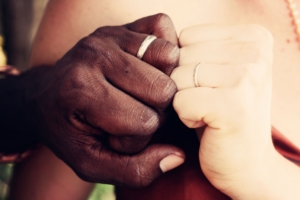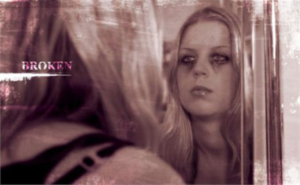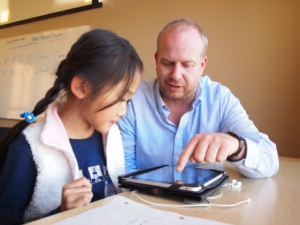The Hidden Hurt: Signs of Physical and Mental Abuse
The lasting effects of childhood physical and mental abuse can take their toll on adult survivors. Learning to recognize the signs of maltreatment will enable you to step in and assist a child in need. However, children are not only the only targets for abuse. Spouses and elderly parents are often victims of domestic violence.
If you are an adult survivor of abuse, there is hope. You can find treatment to help you cope with the painful memories and negative thoughts. Newport Beach Christian Counseling offers compassionate support to help you heal and work through the challenges that stem from past trauma, guiding you toward recovery and a brighter future.
Signs of Physical Abuse
Although not necessarily easy to spot, physical abuse is prevalent in domestic violence cases. Abuse can take the form of physically hitting, punching, or whipping another person. Other forms include sexual abuse and neglecting or withholding the basic needs of another human being.
Common signs of physical abuse include:
- Bruises and cuts – Unexplained wounds that the victim probably tries to hide. They may wear clothing that covers their bruises, even during the hottest days of the year.
- Burns – Small cigarette burns or burn marks from something larger being pressed onto the victim’s skin, such as a kettle. Typically, the victim isn’t even given proper medical care for these burns, resulting in scarring.
- Frequent sprains or broken bones – Hospitals and emergency care centers will report frequent hospital visits for sprains and broken bones if the wounds cannot
be explained satisfactorily by the victim (or the victim’s parents or guardians). - Concussions – Concussions from hitting or shaking the victim. Infants shaken to control their crying may develop Shaken Baby (Impact) Syndrome, which can lead to seizures, retinal hemorrhage, coma, and death.
- Bite marks – Bite marks are signs of abuse that show in a pattern. Other items that are used to physically abuse a victim that leave patterns include belts and flyswatters.

Neglecting a person’s basic needs is withholding or not making sure a person has housing with clean living conditions, heat during the cold winter months, food, clothing, and medical care. Neglect also includes leaving a child or elderly (or disabled) adult alone for extended periods of time.
Since children receive bruises and cuts throughout normal childhood adventures, it is critical that you view the child’s entire physical and emotional wellbeing before assuming it is child abuse. If you are in doubt, speak to a licensed professional for confirmation, such as a child’s school counselor or an elderly person’s primary physician.
Signs of Mental Abuse
Signs of mental abuse in both children and adults can be harder to pinpoint. The caregiver may not even be aware that their words and actions are abusive in nature since it is not physical abuse.
Some of the signs of mental abuse include:
- Withholding affection until the victim does whatever they demand.
- Isolating the victim from friends and family.
- Calling the victim names or spiteful pet names.
- Sarcasm or joking meant to belittle the person or their achievements, dreams, or goals.
- Yelling and slamming things to intimidate their victim.
- Threatening the victim or the victim’s loved ones.
- Keeping a close eye on where their victim is if they are an adult.
- Controlling all of their adult victim’s finances or withholding money for basic needs.
- Treating the adult victim like a child including making and canceling plans.
- Giving commands and expecting them to be followed without question.
- Ignoring the victim’s attempts at conversation.
- Gaslighting the victim by pushing their buttons and then denying one has done anything.
- Turning others against the victim with social manipulation and relational bullying.

Abusers frequently use emotions against their victims. The victim doesn’t know how the abuser will react to anything; they may show rage, love, or indifference. This is another way emotionally abusive parents or spouses can control their victims. When the victim reacts, the abuser may tell others that the victim is crazy or mentally ill.
Children living in a mentally (or physically) abusive home may worry about going home or how their parent is going to react to certain news. This anxiety is beyond the occasional bad report card. The child may become physically ill or develop a headache with the thought of going home.
The child may have learning delays or require the services of a speech-language pathologist. Children and adults under the strain of mental abuse can develop low self-esteem and mental health conditions like depression.
The Effects of Past Abuse
 The scars from past abuse are sometimes harder to bring into the light as they are hidden, sometimes deeply, within the person’s psyche.
The scars from past abuse are sometimes harder to bring into the light as they are hidden, sometimes deeply, within the person’s psyche.
These wounds from physically or emotionally abusive parents can result in survivors with mental health conditions or adults who are emotionally distant from loved ones.
Some of the more common effects of abuse include:
- Anxiety – Anxious thoughts can lead to physical ailments like anxiety attacks, sudden panic attacks, high blood pressure, and gastrointestinal distress.
- Depression – Survivors may experience bouts of deep depression, although they may be unaware of the root cause if the abuse occurred at a very early age. Some survivors develop manic-depressive states, an extreme swing between “high-highs and low-lows.”
- Post-Traumatic Stress Disorder (PTSD) – PTSD can occur in both children and adults. The disorder dredges up the victim’s memories and feelings about the traumatic event with intrusive dreams/nightmares and thoughts. PTSD can also create hallucinatory visions.
- Trust issues – A victim may not be able to lend trust freely after abuse, especially if the abusive relationship was long term. They may be afraid they are going to lose the love or approval of people, and therefore, appear emotionally distant.
- Self-destructive behaviors – Eating disorders, self-harm behaviors like cutting or burning, and living a high risk-taking lifestyle are self-destructive behaviors created to numb the pain of the trauma. These survivors are not thriving but trying to control the only thing they can – their bodies.
- Suicidal thoughts – A survivor may find negative thoughts too much to endure. If you or someone you love is having suicidal thoughts, seek help from a mental health professional or faith-based counselor immediately. Hope and healing are possible.
Often, a survivor of abuse is trying to figure out how to cope with past trauma while moving forward with their life. Talk therapy (also referred to as psychotherapy) and other techniques can help to replace those intrusive memories and beliefs with constructive and positive emotions.
Treatment for Physical and Mental Abuse
Children removed from an abusive relationship can heal from the trauma. A licensed therapist can assist the child through play therapy, art therapy, family therapy, and (depending on the age) Cognitive Behavioral Therapy (CBT).
 Cognitive Behavioral Therapy is commonly used with children and adults for a variety of mental health conditions. It is extremely beneficial for survivors dealing with PTSD. The therapy helps to identify the thoughts, memories, and emotions related to the event. Then the patient learns techniques on how to reframe the event and replace those negative thoughts, thus changing the emotions.
Cognitive Behavioral Therapy is commonly used with children and adults for a variety of mental health conditions. It is extremely beneficial for survivors dealing with PTSD. The therapy helps to identify the thoughts, memories, and emotions related to the event. Then the patient learns techniques on how to reframe the event and replace those negative thoughts, thus changing the emotions.
When they change how they feel about the memories, their behavior will also change. This can help reverse some of the self-destructive behaviors such as an eating disorder.
Talk therapy is effective in one-on-one sessions with a therapist or in a group therapy setting. These group or family sessions can be held at the therapist’s private office or in a facility. Some facilities offer faith-based counseling services that combine professional mental health resources with the Christian faith. These treatments focus on the healing of the mind and spirit after the trauma.
In these settings, the survivor will learn how to rely on God and prayer as well as psychological techniques to overcome the negative thoughts and memories. Depending on the specific circumstance, the patient’s treatment may focus on forgiveness and grace, not only for the abuser but for the victim.
As a survivor learns how to overcome and move on from a childhood of abuse or adult relationship maltreatment, they will realize that not only will they survive what happened to them in the past, but they will thrive. Although their hurts are hidden many times from the outside world, a victim of abuse should never feel alone. Help is only a phone call away. Newport Beach Christian Counseling is here to support you on your healing journey, providing a safe and compassionate space for you to process and grow.
“Blue Door”, Courtesy of APOLLO, Unsplash.com, CC0 License; “Brown Door”, Courtesy of Beto Galetto, Unsplash.com, CC0 License; “Blue Door”, Courtesy of Vincent Wright, Unsplash.com, CC0 License; “Brown Door”, Courtesy of Alberto Gasco, Unsplash.com, CC0 License

 Think about the following: fame, fortune, popularity, success, power, family, and so forth. Why do we want all these things? We want them because we want to be loved. Maybe we won’t admit it but at the end of the day, we work hard because we are searching for that endless love. There are some interesting proverbs in the Bible that support this.
Think about the following: fame, fortune, popularity, success, power, family, and so forth. Why do we want all these things? We want them because we want to be loved. Maybe we won’t admit it but at the end of the day, we work hard because we are searching for that endless love. There are some interesting proverbs in the Bible that support this. Another possibility is that maybe you or someone who is in an emotional affair and you’re wondering if you’ve gone too far. This article interested you because you are at a crossroads in your relationship, and you may have ventured out of the boundaries in an emotional relationship and now you are contemplating on what you are going to do.
Another possibility is that maybe you or someone who is in an emotional affair and you’re wondering if you’ve gone too far. This article interested you because you are at a crossroads in your relationship, and you may have ventured out of the boundaries in an emotional relationship and now you are contemplating on what you are going to do. Adultery doesn’t just happen, it evolves, and these scriptures point out that it started within us. It could be why in the gospel it says that the most important commandment is to love our Lord with all our Heart, Soul, Mind, and Strength. God wants all of us. He doesn’t accept partial love.
Adultery doesn’t just happen, it evolves, and these scriptures point out that it started within us. It could be why in the gospel it says that the most important commandment is to love our Lord with all our Heart, Soul, Mind, and Strength. God wants all of us. He doesn’t accept partial love. This approach is excellent for those who have been hurt by emotional infidelity because they feel the pain of being betrayed. They can explore those feelings and realize past trauma tied into the current hurt. The process continues as to what they are thinking and possible actions they can take to empower themselves. This is one of many possible approaches but in my work with hundreds of clients, I can’t think of a better approach.
This approach is excellent for those who have been hurt by emotional infidelity because they feel the pain of being betrayed. They can explore those feelings and realize past trauma tied into the current hurt. The process continues as to what they are thinking and possible actions they can take to empower themselves. This is one of many possible approaches but in my work with hundreds of clients, I can’t think of a better approach. Resilience after a rejection is not a trait only some people are blessed with. Dealing with rejection is a behavior that you can learn. It is how you identify and analyze your thoughts and emotions after rejection. It is learning how to use that hurt to mold and create your purpose by shifting your perspective.
Resilience after a rejection is not a trait only some people are blessed with. Dealing with rejection is a behavior that you can learn. It is how you identify and analyze your thoughts and emotions after rejection. It is learning how to use that hurt to mold and create your purpose by shifting your perspective. speak or acknowledge your presence. They may feel overwhelmed at work and take a quick break to scroll social media and inadvertently skip “liking” your post. Or, perhaps they are trying to manage all the small details for a social gathering and forget to personally invite you.
speak or acknowledge your presence. They may feel overwhelmed at work and take a quick break to scroll social media and inadvertently skip “liking” your post. Or, perhaps they are trying to manage all the small details for a social gathering and forget to personally invite you. Keeping the pain from rejection bottled up inside however is unhealthy and can lead to other long-term problems. You can feel the hurt, just don’t get lost in it. You don’t want the emotions to override your controlled behavior. Under the initial sadness, anger, or resentment of rejection is the hurt that needs to be addressed.
Keeping the pain from rejection bottled up inside however is unhealthy and can lead to other long-term problems. You can feel the hurt, just don’t get lost in it. You don’t want the emotions to override your controlled behavior. Under the initial sadness, anger, or resentment of rejection is the hurt that needs to be addressed. Allowing a situation to take the forefront in your mind can also exacerbate the pain and emotions toward the person or people involved. Anger, bitterness, and resentment can grow exponentially. The problem with allowing these emotions to grow is that they end up hurting you.
Allowing a situation to take the forefront in your mind can also exacerbate the pain and emotions toward the person or people involved. Anger, bitterness, and resentment can grow exponentially. The problem with allowing these emotions to grow is that they end up hurting you.
 Fear can be attached to reasons for withdrawal. Many people who withdraw live in dread of getting hurt so badly again. Though the real threat of danger may have passed, the trauma from the original incident runs deep. The fear of getting hurt again can drive the urge to withdraw.
Fear can be attached to reasons for withdrawal. Many people who withdraw live in dread of getting hurt so badly again. Though the real threat of danger may have passed, the trauma from the original incident runs deep. The fear of getting hurt again can drive the urge to withdraw. Emotional withdrawal symptoms can last for a few weeks after a trigger incident. If not handled right away, these symptoms can persist for months or even years. You need help to deal with these symptoms, so they don’t exact a heavy toll on your physical and mental well-being.
Emotional withdrawal symptoms can last for a few weeks after a trigger incident. If not handled right away, these symptoms can persist for months or even years. You need help to deal with these symptoms, so they don’t exact a heavy toll on your physical and mental well-being. The boy who was bullied gains some boundary-setting skills with his counselor. He learns to view his classmates as not “all bad” any longer. By taking a few calculated risks, practiced with his counselor, he connects with one child in the class and begins building a friendship.
The boy who was bullied gains some boundary-setting skills with his counselor. He learns to view his classmates as not “all bad” any longer. By taking a few calculated risks, practiced with his counselor, he connects with one child in the class and begins building a friendship. SAD is the official psychological diagnosis for social anxiety so intense that it disrupts your daily life and functioning. Not everyone with social anxiety has a mental health disorder, but whether or not your anxiety has prevented you from functioning, it has probably caused you significant distress.
SAD is the official psychological diagnosis for social anxiety so intense that it disrupts your daily life and functioning. Not everyone with social anxiety has a mental health disorder, but whether or not your anxiety has prevented you from functioning, it has probably caused you significant distress. Sometimes this condition may seem to go away for awhile, but it flares up under stress, or when it’s no longer possible to avoid a triggering situation. If that is the case, you may think you don’t need to seek treatment for the anxiety, but fast forward several months or a few years. You’re going through a lot of life stressors, and suddenly you find that your social anxiety has driven you to avoidance and you’ve become isolated.
Sometimes this condition may seem to go away for awhile, but it flares up under stress, or when it’s no longer possible to avoid a triggering situation. If that is the case, you may think you don’t need to seek treatment for the anxiety, but fast forward several months or a few years. You’re going through a lot of life stressors, and suddenly you find that your social anxiety has driven you to avoidance and you’ve become isolated. Or maybe you grew up with parents who were controlling or overprotective. If children are not allowed to naturally develop independence, they may internalize the message that they are not capable of successfully navigating the world on their own. If children are overly dependent due to being overly protected, they may develop social anxiety because they don’t have the necessary skills to navigate social situations – or they just don’t have the confidence.
Or maybe you grew up with parents who were controlling or overprotective. If children are not allowed to naturally develop independence, they may internalize the message that they are not capable of successfully navigating the world on their own. If children are overly dependent due to being overly protected, they may develop social anxiety because they don’t have the necessary skills to navigate social situations – or they just don’t have the confidence. Expressive or therapeutic writing is connected to better mental and physical health, and it has even been shown to lower social anxiety levels over time in subjects who wrote about a stressful public speaking event.
Expressive or therapeutic writing is connected to better mental and physical health, and it has even been shown to lower social anxiety levels over time in subjects who wrote about a stressful public speaking event. If you’re interested in self-help or self-development, you might have noticed popular social media figures promoting law of attraction concepts. For example, YouTuber Lavendaire, who has a million subscribers, wrote this on her blog:
If you’re interested in self-help or self-development, you might have noticed popular social media figures promoting law of attraction concepts. For example, YouTuber Lavendaire, who has a million subscribers, wrote this on her blog: Of course, this concept is attractive! It offers us a sense of control. Who wouldn’t want to be healthy and wealthy? But is this belief based on science and evidence, or is it pseudoscience? And more importantly, does this concept align with Scripture, or is it based solely on humanistic or New Age teachings?
Of course, this concept is attractive! It offers us a sense of control. Who wouldn’t want to be healthy and wealthy? But is this belief based on science and evidence, or is it pseudoscience? And more importantly, does this concept align with Scripture, or is it based solely on humanistic or New Age teachings? Certain aspects of positive thinking can create a self-fulfilling prophecy. You decide to be positive, so your happiness attracts people to you, leading to improved relationships, career progress, etc.
Certain aspects of positive thinking can create a self-fulfilling prophecy. You decide to be positive, so your happiness attracts people to you, leading to improved relationships, career progress, etc.
 Grief is not always related to physical death. It can be the death of a dream or the death of a life stage that you enjoyed. A new mother of a special needs baby may need to give up dreams for her child and the future she expected.
Grief is not always related to physical death. It can be the death of a dream or the death of a life stage that you enjoyed. A new mother of a special needs baby may need to give up dreams for her child and the future she expected. Two months after the funeral, everyone has gone back to their regular lives, except Diane. She has felt numb, telling everyone she is fine. But her anger at the slightest provocations, as when she is driving, shocks her. Diane feels withdrawn, sullen, and miserable. Finally, she reaches out for help at church. Her pastor suggests that she meet with a Christian counselor to deal with her grief.
Two months after the funeral, everyone has gone back to their regular lives, except Diane. She has felt numb, telling everyone she is fine. But her anger at the slightest provocations, as when she is driving, shocks her. Diane feels withdrawn, sullen, and miserable. Finally, she reaches out for help at church. Her pastor suggests that she meet with a Christian counselor to deal with her grief. On their wedding anniversary three years after Paul died, Diane visits his burial site with a much lighter heart. She still feels sad, but she is no longer consumed by grief. She thanks God for all the goodness Paul brought to her life. As she drives away, she praises God for bringing her to a place of acceptance.
On their wedding anniversary three years after Paul died, Diane visits his burial site with a much lighter heart. She still feels sad, but she is no longer consumed by grief. She thanks God for all the goodness Paul brought to her life. As she drives away, she praises God for bringing her to a place of acceptance. But he reaches for acceptance by setting a 24-month deadline to move out on his own again. During that period, he will receive the counseling support he needs to rebuild his spiritual and emotional reserves.
But he reaches for acceptance by setting a 24-month deadline to move out on his own again. During that period, he will receive the counseling support he needs to rebuild his spiritual and emotional reserves. The fear of abandonment can create lasting problems from childhood long into adulthood. Adults with abandonment issues may sabotage, consciously or subconsciously, personal relationships with others. This can take the form of pushing a partner away after a period of time to keep that person from eventually leaving first.
The fear of abandonment can create lasting problems from childhood long into adulthood. Adults with abandonment issues may sabotage, consciously or subconsciously, personal relationships with others. This can take the form of pushing a partner away after a period of time to keep that person from eventually leaving first. If the child comes from a poor family where the basics of food, running water, power, and heat are not provided consistently, the child may associate that with a lack of love. Loving parents try to provide for their children’s basic needs, and on some level, children instinctively know this.
If the child comes from a poor family where the basics of food, running water, power, and heat are not provided consistently, the child may associate that with a lack of love. Loving parents try to provide for their children’s basic needs, and on some level, children instinctively know this. During the aftermath of a parent’s death, the surviving parent must cope with their own emotions. Sometimes this means that they wind up neglecting their child’s emotional needs. This isn’t necessarily done on purpose; both child and parent are hurt.
During the aftermath of a parent’s death, the surviving parent must cope with their own emotions. Sometimes this means that they wind up neglecting their child’s emotional needs. This isn’t necessarily done on purpose; both child and parent are hurt. The behavior from the fear of abandonment causes a reaction from those involved. Unfortunately, the adult with these issues may get a sense of satisfaction from these reactions and the attention they garner and cycle through the behavior again. To the outside world, these people appear full of drama and consistently in new relationships. However, the truth is that the person is hurting with an emotional need that is still unmet.
The behavior from the fear of abandonment causes a reaction from those involved. Unfortunately, the adult with these issues may get a sense of satisfaction from these reactions and the attention they garner and cycle through the behavior again. To the outside world, these people appear full of drama and consistently in new relationships. However, the truth is that the person is hurting with an emotional need that is still unmet. The APA Dictionary of Psychology defines passivity as “a form of adaptation, or maladaptation, in which the individual adopts a pattern of submissiveness, dependence, and retreat into inaction.”
The APA Dictionary of Psychology defines passivity as “a form of adaptation, or maladaptation, in which the individual adopts a pattern of submissiveness, dependence, and retreat into inaction.” We can look to the Bible for examples of how passivity cost people tremendous amounts of heartache and loss. One clear example is Jacob, son of Isaac and Rebekah, as we read in Genesis 25-28. Though his brother Esau was the heir to their father’s inheritance, Jacob passively allowed his mother to manipulate the situation so he would receive the blessing.
We can look to the Bible for examples of how passivity cost people tremendous amounts of heartache and loss. One clear example is Jacob, son of Isaac and Rebekah, as we read in Genesis 25-28. Though his brother Esau was the heir to their father’s inheritance, Jacob passively allowed his mother to manipulate the situation so he would receive the blessing. Emotionally, passivity can exact a heavy toll. You may feel weak and insecure, lacking confidence in your ability to take charge of your life. Passivity can cause anxiety, depression, anger, and other emotional disturbances.
Emotionally, passivity can exact a heavy toll. You may feel weak and insecure, lacking confidence in your ability to take charge of your life. Passivity can cause anxiety, depression, anger, and other emotional disturbances. The parents come up with a 60-day plan for holding their son accountable for finding a job and his own place. They work with a counselor to form talking points for a loving confrontation.
The parents come up with a 60-day plan for holding their son accountable for finding a job and his own place. They work with a counselor to form talking points for a loving confrontation. But in those times, it was quite clear that such devices were generally for entertainment purposes. It was easier then for both parents and children to understand that when studying or doing other daily tasks, such devices had to be turned off or left at home.
But in those times, it was quite clear that such devices were generally for entertainment purposes. It was easier then for both parents and children to understand that when studying or doing other daily tasks, such devices had to be turned off or left at home. For lots of teens, their social media accounts have become their virtual “hangout” where they keep in touch with others, even if they are at home. Teens can easily spend hours on their various accounts as they scroll through their friends’ and family members’ accounts, communicate with others, and update their own social media pages. And this is where the anxiety comes in.
For lots of teens, their social media accounts have become their virtual “hangout” where they keep in touch with others, even if they are at home. Teens can easily spend hours on their various accounts as they scroll through their friends’ and family members’ accounts, communicate with others, and update their own social media pages. And this is where the anxiety comes in.
 When being mindful, the brain is trained to become aware of the things happening around them – sounds of water or animal life, the feel of the ground under their feet, the smell of their immediate environment, or the beauty of their world seen through open eyes. In this way, they may then be able to pull their minds out of the virtual world they may be in and reassess what is “real.” This is particularly helpful if they find their minds stuck on negative thoughts about a recent post or comment on social media.
When being mindful, the brain is trained to become aware of the things happening around them – sounds of water or animal life, the feel of the ground under their feet, the smell of their immediate environment, or the beauty of their world seen through open eyes. In this way, they may then be able to pull their minds out of the virtual world they may be in and reassess what is “real.” This is particularly helpful if they find their minds stuck on negative thoughts about a recent post or comment on social media.